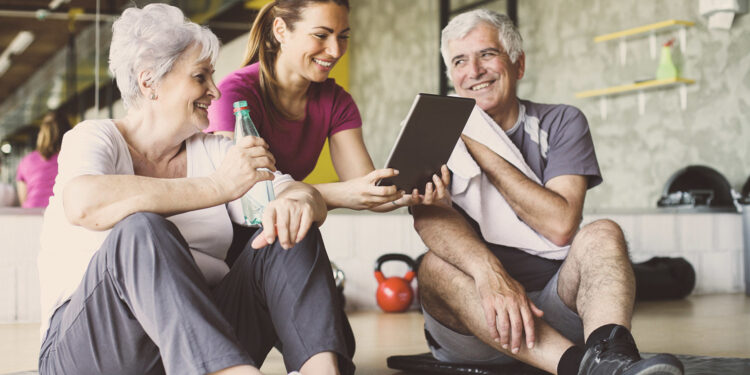How the Greater Wyoming Valley Area YMCA is providing technology basics for seniors in the community.
The Greater Wyoming Valley Area YMCA realized the need for a senior tech help program during the initial COVID-19 shutdowns. When organizations, businesses and health care services migrated to online systems — assuming most have access to or understand technology basics — the senior demographic was left to navigate this change on their own, or lean on friends and family for help.
Michele Schasberger, the healthier communities coordinator at the Greater Wyoming Valley Area YMCA, shared that before launching the program the Y was trying to maintain wellness programs — especially for senior members — via Facebook Live and Zoom. The need for the program was realized when wellness staff found themselves spending more hours coaching on how to use technology than on teaching classes.
“Seniors were isolated from each other in their homes, plus having to learn how to use these devices to get connected,” said Schasberger. “So it seemed important to address this.”
To launch a technology basics for seniors program, Schasberger recommended a staff member who is patient, good with technology, open-minded and flexible, and who likes working with seniors. Additionally, the space requirements for this program are small and should be provided in an easily visible space with signage.
“CJ Werner, our senior tech help staff member, provides this program in our cafe area, a visible space off the main exit/entrance path with tables and chairs,” shared Schasberger. “Seniors can sign up for the program at our front desk, on our website or just walk in if our staff member isn’t working with someone else. There is a small display on the senior tech help table during active hours.”
The program is free and open to all seniors — not just to members — and offered Mondays, Wednesdays and Fridays from 3 to 6 p.m. The Y advertises the program with other community-oriented offerings such as free senior lunch walks and the blood pressure self monitoring program.
It’s also promoted in weekly eblasts and flyers. Wellness staff members who work with seniors can also refer people who are having problems with technology. However, Schasberger added the No. 1 way seniors become aware of the program is through word-of-mouth and seeing other people working with staff on their devices in the cafe.
Lastly, Schasberger advised being clear on what the program can and cannot help with. “Our senior tech help focuses on mobile devices of all kinds including laptops, phones, e-readers, etc. but the senior has to be able to bring it in,” she said. “What our staff member doesn’t do is fix things. Senior tech help really is help and the aim is education so the senior can use their own devices.”
Advice from senior tech help staff member CJ Werner.
“Be patient, tolerant and keep an open mind. Be prepared for someone to bring something unexpected through that door. It’s not just a learning experience for them; I learn more about some devices than I ever would have if they didn’t bring it in. Also, a lot of the seniors are shy and embarrassed about needing help with their technology. I try to remind them they’re still really smart. They learned things our generation now couldn’t figure out or do on our own, in their prime too, like adding quickly without a calculator, or writing in cursive. In reality, we’re the inexperienced ones and they’re just adding on to their already vast knowledge.”










